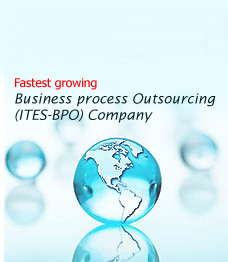 E-Governance
originated in India during the seventies with a focus on in- house
government applications in the areas of defence, economic monitoring,
planning and the deployment of ICT to manage data intensive functions
related toelections, census, tax administration etc. The efforts of the
National Informatics Center (NIC) to connect all the district headquarters
during the eighties was a watershed. From the early nineties, e-governance
has seen the use of IT for wider sectoral applications with policy emphasis
on reaching out to rural areas and taking in greater inputs from NGOs and
private sector as well. There has been an increasing involvement of
international donor agencies such as DfID, G-8, UNDP, WB under the framework
of e-governance for development.
E-Governance
originated in India during the seventies with a focus on in- house
government applications in the areas of defence, economic monitoring,
planning and the deployment of ICT to manage data intensive functions
related toelections, census, tax administration etc. The efforts of the
National Informatics Center (NIC) to connect all the district headquarters
during the eighties was a watershed. From the early nineties, e-governance
has seen the use of IT for wider sectoral applications with policy emphasis
on reaching out to rural areas and taking in greater inputs from NGOs and
private sector as well. There has been an increasing involvement of
international donor agencies such as DfID, G-8, UNDP, WB under the framework
of e-governance for development.While the emphasis has been primarily on automation and computerization, state endeavours to use IT include forays into connectivity, networking, setting up systems for processing information and delivering services. At a micro level, this has ranged from IT automation in individual departments, electronic file handling, access to entitlements, public grievance systems, service delivery for high volume routine transactions such as payment of bills, tax dues to meeting poverty alleviation goals through the promotion of entrepreneurial models and provision of market information. The thrust has varied across initiatives, with some focusing on enabling the citizen-state interface for various government services, and others focusing on bettering livelihoods
» E-Governance
The Government of India has launched the National e-Governance Action Plan (NeGP) with the intent to support the growth of e-governance within the country. The Plan envisages creation of right environments to implement G2G , G2B , G2E and G2C services.
Many developments initiated by various government agencies are seemingly done in isolation. Different development platforms are used and the applications under different platforms are seldom interoperable with the result that it is difficult to integrate them even though many have similar features and functionalities. Added to this, is the fact that there is no single agency responsible for framing enforceable e-governance standards.
The prime objective of any E-Governance proceedings are :-
|

Services by RENUKA INFOCOM PVT LTD for E-Governance initiatives includes providing consultancy, technology and implementation for following:
|



